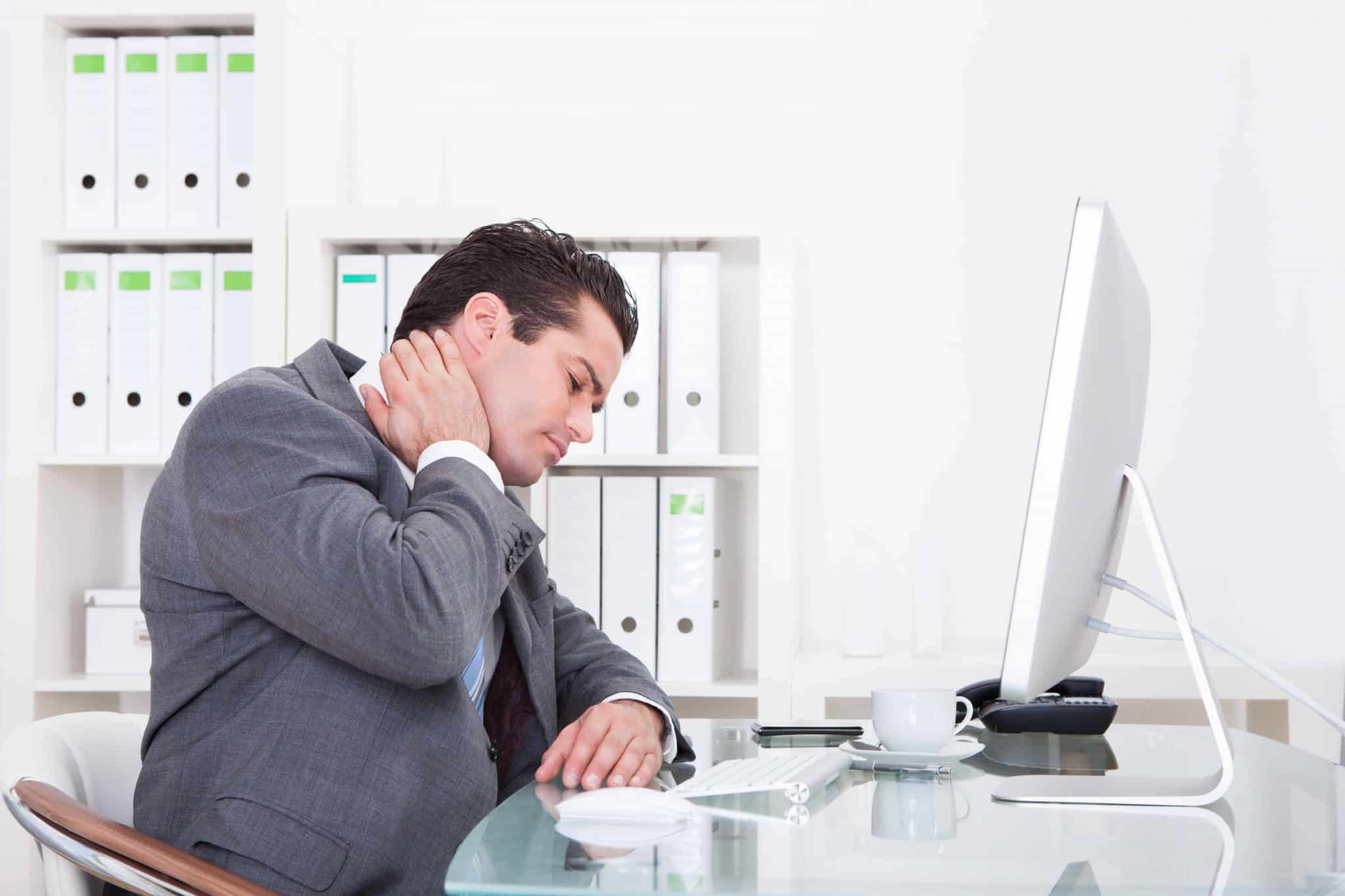Halfway through your day in the office and you’re already starting to feel that niggling pain in your back which slowly creeps up to your neck. You know it won’t be long before a full-scale headache or backache sets in. Sound familiar? Most office workers spend the majority of their day sitting at a desk. Combined with the number of hours spent seated while on the daily commute, eating meals and relaxing after work; these figures result in a large amount of our days spent in a sedentary position. Our bodies are built to move, therefore any prolonged position such as sitting can result in repetitive strain on our joints and muscles.
Short term, you may experience muscle tightness, decrease in flexibility or general discomfort. Long term, repetitive strain on the joints can lead to overuse injuries, headaches, and spinal degeneration. These symptoms respond well to manual therapy but have a much better prognosis if the treatment is combined with lifestyle changes.
Taking some simple steps during your work day can help alleviate the occurrence of these symptoms and assist in the prevention of long term consequences.
• Awareness: Consider your work environment. Are you sitting in a comfortable position? Is your chair and desk at an appropriate height? Do you have to strain to reach the printer or twist around to access paperwork? It is always helpful to have an ergonomic assessment of your work station to ensure it is appropriate for your body. For more information on ergonomics please refer to: http://www.ergonomics.com.au/how-to-sit-at-a-computer/
• Regular breaks: Ensure you take regular breaks away from your work station. Whether it’s taking a 10-20 minute walk on your lunch break, meeting a friend outside or even taking the stairs instead of the lift; all these activities will help to break the cycle of sedentary activity and keep your body moving throughout the day.
• Hydration: Hydrate, hydrate, hydrate. We often hear this, but it is so important to drink enough water. This will help maintain energy levels and prevent dehydration, which could otherwise lead to symptoms such as muscle cramping and headaches. Try keeping a 1L bottle of water on your desk and aim to refill at least 1-2 times per day. Refilling your water bottle is also a great excuse to take a short break from your desk.
• Desk exercises: Without leaving your desk, there are still plenty of ways to keep active and break the sitting cycle.
1. Stretch neck by nodding chin down, then up and to the left and right, holding each stretch for 15-30seconds
2. Stand up, reach your arms above your head and slowly bring them forward as you lean forward with your torso (only go as far as comfortable), ensure you bend your knees slightly while keeping your back straight and holding your stomach muscles in.
3. Reach your arms out to the side to open your chest and take some deep breaths. Hold your breath before slowly exhaling. This will help relax your muscles and assist in resetting before you sit again.
4. Giving your neck a mini massage is another great way to ease tension, which often builds up the longer you are seated in the same position.
For more helpful exercises, I have included a collection of video exercises to do here==> PracTX.
• Focus on your health: Outside of work, ensure you partake in regular exercise of at least 20-30 minutes of moderate activity per day. This can be as easy as walking to work or getting off the bus a few stops early. It helps to find a sport or activity you enjoy, so it becomes less of a chore. Also, maintaining a well-balanced diet and getting enough sleep is essential.
If you are already suffering from some or all of these symptoms, it is highly recommended that you consult your Bankstown Health practitioner for an assessment and further advice.





